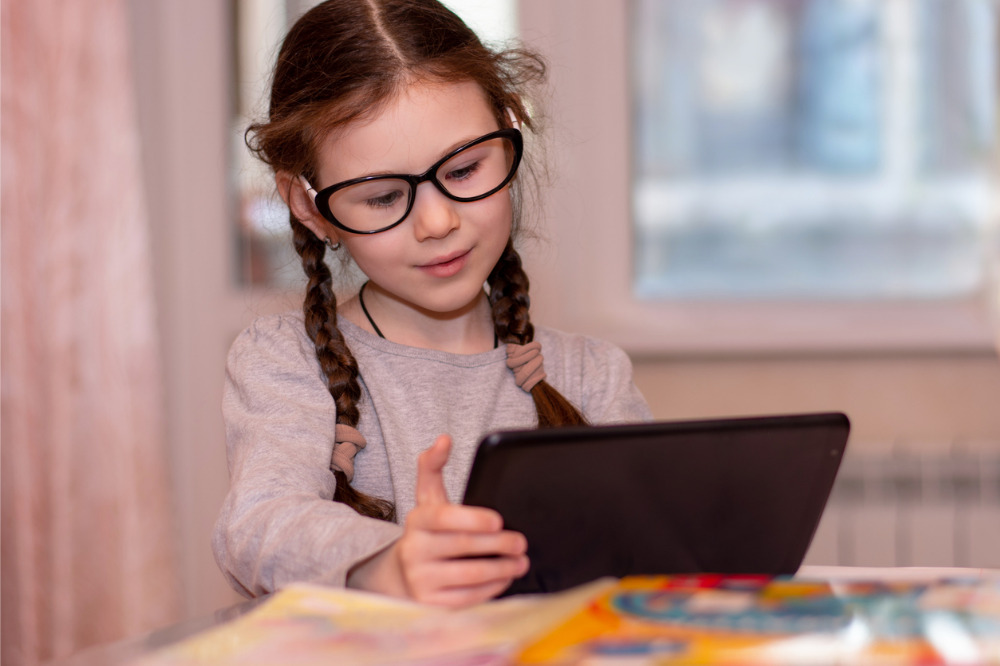
In Australia, studies show that the average person will spend almost 17 years – or 33% of their waking life – on their smartphone.
During the Covid-19 pandemic, screentime habits increased markedly when lockdowns forced people to communicate via computer screens instead of in person.
Australian screentime guidelines recommend zero screentime per day for children aged up to 2, one hour per day for children aged 2-4, and two hours per day for children aged five.
However, a nationwide report by the Australian Institute of Family Studies has found that up to 30% of a child’s waking time is spent in front of a screen.
Associate Professor, Leigh Tooth from the University of Queensland and her fellow researchers from the University’s School of Public Health, looked at adherence to screentime guidelines in Australian children aged 0-12, showing adherence to be poor, especially in children aged up to five.
“We have also shown that in families where children span multiple screentime guideline categories that adherence is poorer still, especially in kids aged 2-4 – around 90% are not adherent, most likely because they are doing the screen time of their older siblings, aged five and over,” Assoc/Prof Tooth told The Educator.
“The message in my research is clearly that parents need to be aware of screentime guidelines; that the education of parents about screentime guidelines should be given to parents as early as possible, in pregnancy, at early childhood visits in the first year of life etc; and that screen time guidelines need to take into account the difficulties parents are facing, particularly when they have children of different ages.”
Assoc/Prof Tooth said that this involves providing practical tips and strategies for parents as to how this should be managed.
“There is a lot of research showing that excessive screentime can be harmful to a child’s growth and development but also research showing the type of screen time matters,” she said.
“So, it’s not a black and white area. Screens are here, like it or not, and children will use them, some parents will be aware and follow guidelines, like they do for diet , physical activity and sleep etc, and some will not.”
Assoc/Prof Tooth said education and awareness and making guidelines realistic are all needed.
“My research has not investigated the impact of programs designed to help parents or children manage screentime – something I would like to do in the future.”
Dr Lauren Gardner is a Research Fellow based at the University of Sydney’s Matilda Centre for Research in Mental Health and Substance Use.
The Centre’s study of over 6,600 Australian adolescents found 86% were engaging in excessive recreational screen time, and these rates are continuing to climb.
Dr Gardner said that when researchers highlight that the current recommendation for young people in Australia is to limit recreational screen use to a maximum of two hours per day, people are often quite surprised at how low this limit seems.
“Our research similarly shows that many young people don’t know this guideline, suggesting more needs to be done to raise awareness,” Dr Gardner told The Educator.
“However, awareness isn’t always enough, and there is a need for effective behaviour change interventions.”
Dr Gardner says it’s important to remember that screen use is just one of a several key interrelated health behaviours that can impact a young person’s mental health, and targeting other behaviours, like physical activity and sleep, naturally has flow-on effects.
“Parents play an important role in terms of modelling healthy habits, like putting their phones away and getting some exercise, as well as rule setting, such as no device use an hour before bed to ensure good sleep hygiene,” she said.
“Educators can utilise evidence-based behaviour change interventions, like Health4Life and OurFutures, to empower students to improve their physical and mental health.”


